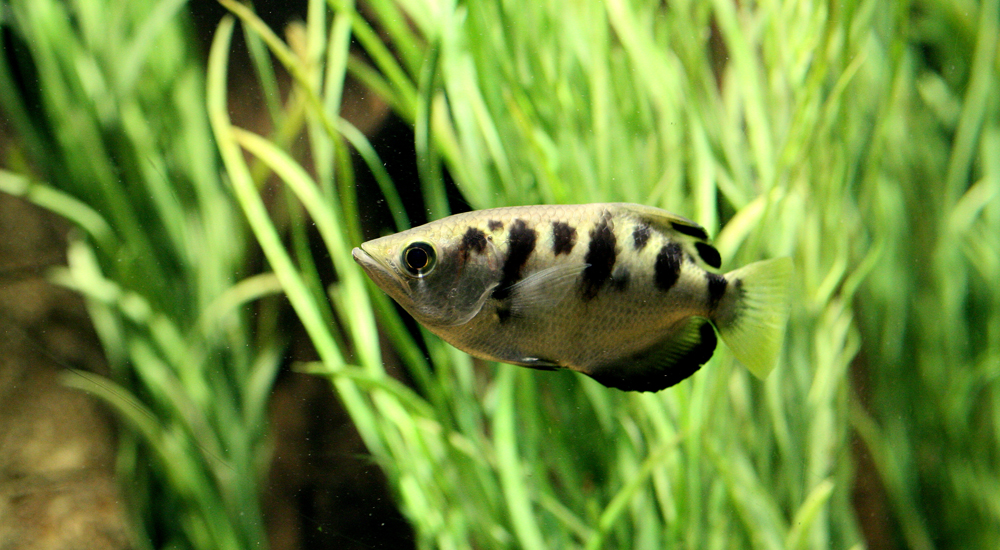There’s no doubt that fishes’ faces are very different to human ones. Despite this, archerfish are still able to recognise our faces. But that’s not all they can do: they can also distinguish between people they do and don’t know. At least, these are the findings of an Australian study of archerfish.
The ability to recognise human faces is seen as a skill that requires a certain level of brain power. “This is because faces share the same features”, explains Dr Cait Newport, a scientist at the University of Queensland. For a long time, it was therefore believed that primates were the only ones able to differentiate between individuals. In fact, several mammals and specially trained pigeons can also do this – but what about fish?
Outstanding marksmen
“The structure of a fish’s brain is far simpler than that of a human’s. Fish also lack the part of our brain that enables us to identify faces”, comments Newport. The fish therefore provided a good way of demonstrating the extent to which simpler minds can also master this complex task.
The researchers chose archerfish as the object of their research. These hunters have outstanding eyesight, which they use for their very special way of catching prey: the fish lie in wait just below the surface of the water and shoot insects off branches and grasses with a precise jet of water. This special hunting behaviour also gave the archerfish its name. For the purposes of science, the most important trait of these animals with their spitting skills is their clear ability to make decisions.
Shooting at the right face
In Newport’s experiment, the researchers presented images of different people to the archerfish by displaying them on a screen that hung over the water. If they didn’t spit at a certain face, they received a small food pellet as a reward. With these ‘bribes’, the fish showed that in 81 percent of cases, they were able to identify the one face that led to them receiving a treat from up to 44 different faces. This even applied when the pictures were shown to them in greyscale or the head shape itself was distorted.
Different skills
The archerfish experiment has clearly shown that neither a complex brain nor a great deal of human contact is required in order to recognise faces. However, it cannot be presumed that the fish look for the same features that we do. Rather, they are able to notice and recognise patterns. Not all of the archerfish involved in the study were as good as each other. Some fish only needed one training session while others had to be instructed far more often. Some fish also constantly improved the more they were able to practice.

